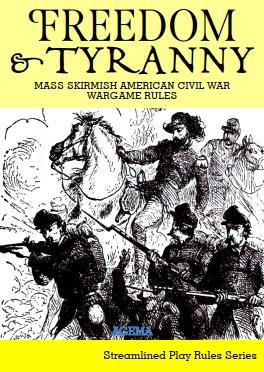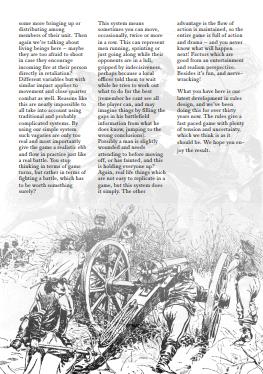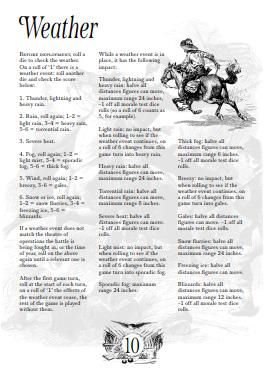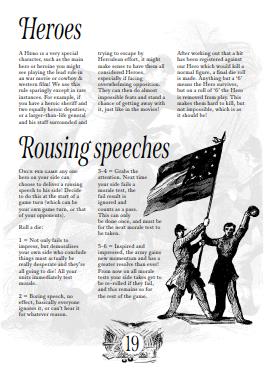All our PDFs are sent out attached to emails, the same or next working day at the latest. All our products are available in PDF format worldwide, but hard copy print versions are only available in the UK.
ACW WARGAME RULES
Designed for mass skirmish wargames with figures (miniatures), played on tabletop.
Buy Freedom & Tyranny ACW wargame rules (PDF version) £6.49
Buy Freedom & Tyranny ACW wargame rules (printed version, UK only, inc.p&p) £11.99
Freedom & Tyranny is a set of wargame rules born out of a re-examination of our massed skirmish wargame rules set Sacre Bleu, which has been very successful and popular with players. We’ve streamlined and deepened the system, and after much play testing created a series of rule sets which share common core mechanisms heavily tweaked for different periods. These make up our ‘Streamlined Play Rules Series’.
We’ve provided different ways of choosing your wargame armies or forces, and numerous different ways to set up the game to give good variety. Weather features, as do rousing speeches (!), and heroes take on an uncanny cinematic ability to survive in situations where lesser mortals would fall by the dozen.
Command and control is covered, but as with all the mechanisms the emphasis is on keeping things simple during game play. With that in mind the means of establishing hits when shooting and in close combat is deceptively simple, once you get the hang of it.
Smoke can interfere and buildings can collapse, morale tests are straightforward, but can result in lengthy or short routs, while most forms of cover bolster the chance of soldiers standing their ground, again while avoiding complexity. In fact we found making everything complicated would be really easy to achieve, simplifying things was far harder to do, but through our development process we believe this has finally been achieved.
As with Sacre Bleu, our most controversial decision is to make it possible that one side might be able to act, if very lucky, several times in a row before an enemy can. Taken at face value this seems illogical, unfair and crazy, and the same goes for all shooting, movement and close combat. War, however, is not fair, and can be illogical, unfair, and crazy! In practice this system allows reality to be reflected rather better than normal wargame rules can manage. In real actions we have situations where troops are frenetic in their activity, shooting for a short period like there’s no tomorrow (which for some there won’t be) while the other side crouches down and takes it, barely letting off a bullet. Equally one side can get the local initiative in a melee, putting the enemy on the back foot and reducing them to defending for a time. This doesn’t happen all the time, but can, and the game system reflects this. The alternative was to use some sort of pinning system, but they only provide a basis for not shooting back immediately if taking a lot of suppressing fire from an enemy. Real life is far more random than that; perhaps the men aren’t shooting back yet because their commanding officer has told them to wait until they see the whites of the enemies’ eyes? He could be wrong to do so, but in battle it happens a lot. Then again, it might be the men were caught with too few bullets, or the cartridges are too damp from exposure in the night, or they just need some more bringing up or distributing among members of their unit. Then again we’re talking about living beings here – maybe they are too afraid to shoot in case they encourage incoming fire at their person directly in retaliation? Different variables but with similar impact applies to movement and close quarter combat as well. Reasons like this are nearly impossible to all take into account using traditional and probably complicated systems. By using our simple system such vagaries are only too real and most importantly give the game a realistic ebb and flow in practice just like a real battle. You stop thinking in terms of game turns, but rather in terms of fighting a battle, which has to be worth something surely?
This system means sometimes you can move, occasionally, twice or more in a row. This can represent men running, sprinting or just going along while their opponents are in a lull, gripped by indecisiveness, perhaps because a local officer told them to wait while he tries to work out what to do for the best (remember he cant see all the player can, and may imagine things by filling the gaps in his battlefield information from what he does know, jumping to the wrong conclusions). Possibly a man is slightly wounded and needs attending to before moving off, or has fainted, and this is holding everyone up? Again, real life things which are not easy to replicate in a game, but this system does it simply. The other advantage is the flow of action is maintained, so the entire game is full of action and drama – and you never know what will happen next! Factors which are good from an entertainment and realism perspective. Besides it’s fun, and nerve-wracking!
What you have here is our latest development in rules design, and we’ve been doing this for over thirty years now. The rules give a fast paced game with plenty of tension and uncertainty, which we think is as it should be. We hope you enjoy the result.








